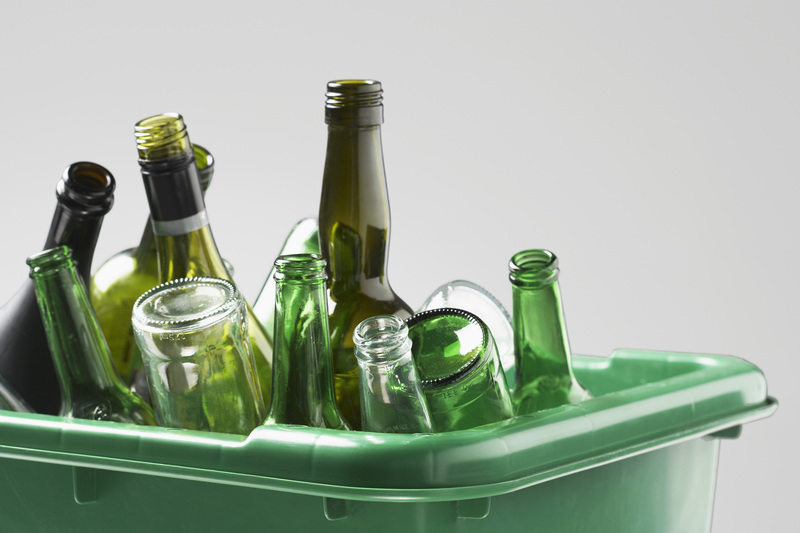Smart Solutions for Dealing With PPE Waste at Home or Work
Over the past few years, the use of personal protective equipment (PPE) has skyrocketed in homes, workplaces, and public areas, particularly due to the ongoing global health concerns. PPE such as masks, gloves, face shields, and gowns have played a crucial role in safeguarding public health--but their extensive use has also generated a massive amount of waste. Finding effective, smart solutions to manage PPE waste at home and in the workplace is now more important than ever in promoting hygiene, safety, and environmental sustainability.
Understanding the Scale of PPE Waste
Before diving into innovative PPE waste management strategies, it's essential to understand what makes this issue so critical. According to estimates, billions of PPE items have been discarded globally since 2020. Traditional disposal methods, which often involve landfilling or incineration, are not only unsustainable but can also contribute to environmental pollution and public health risks.
- Single-use masks can take up to 450 years to decompose in landfills
- Improperly disposed gloves and face shields can enter waterways, harming wildlife
- PPE waste may be contaminated, posing a biohazard risk to waste handlers and the general public
Smart PPE waste solutions are designed to address these concerns by minimizing environmental impact, boosting safety, and enabling communities to play a role in responsible waste management.

What Counts as PPE Waste?
It's helpful to clarify what items fall under the term "PPE waste" before implementing disposal strategies. PPE waste typically includes:
- Disposable face masks (surgical, N95, KN95, etc.)
- Reusable and single-use gloves (latex, nitrile, vinyl, plastic)
- Face shields and protective goggles
- Shoe covers and gowns
- Disposable aprons and hairnets
In both home and work settings, some PPE may have been exposed to hazardous substances, so proper sorting and handling are crucial.
Key Challenges in PPE Waste Management
There are several obstacles to managing PPE waste efficiently, including:
- Contamination risks: Used PPE may carry pathogens, chemicals, or other hazardous substances.
- Sheer volume: Mass use of disposable PPE leads to rapid waste accumulation.
- Lack of dedicated PPE recycling systems: Most municipal waste programs are not equipped to process PPE waste.
- Public confusion: Uncertainty about how or where to dispose of used PPE safely.
- Environmental impact: Many PPE items are made of plastics, contributing to non-biodegradable waste.
To overcome these challenges, individuals and organizations need innovative PPE waste disposal solutions that are safe, simple, and sustainable.
Best Practices for Handling PPE Waste at Home
1. Separate PPE Waste from Other Trash
Always segregate used personal protective equipment waste from household recyclables and regular garbage. This prevents potential contamination and helps waste handlers identify hazardous items more easily.
2. Double-bag PPE Waste
Health agencies recommend placing discarded PPE in a separate bag, and then placing it inside a second bag. This reduces the risk of leaks and minimizes exposure risk to others who handle the waste.
3. Clearly Mark PPE Waste Bags
Use labels or bright-colored bags to clearly identify PPE waste for municipal collectors, especially if you or anyone in your home is sick or self-isolating.
4. Do Not Flush PPE Items
Never flush disposable masks, gloves, or wipes down the toilet. These items can cause serious clogs in wastewater systems and pollute waterways.
5. Utilize PPE Disposal Bins
Consider setting up a dedicated PPE disposal bin near your home's entryway, in the bathroom, or wherever PPE is removed. Empty it regularly following recommended guidelines.
6. Explore Local Recycling Options
Some areas are piloting PPE recycling programs. Check with your local public health department or waste authority to see if there are special take-back or recycling kiosks for masks and gloves near you.
Effective PPE Waste Management Strategies for Workplaces
Workplaces, especially those in healthcare, retail, hospitality, or manufacturing, generate significant volumes of PPE waste daily. Implementing smart personal protective equipment waste solutions at work is key to worker safety and environmental responsibility.
1. Set Up Clearly Labeled PPE Disposal Stations
- Place bins at strategic locations (entrances, exits, break rooms, near PPE donning/doffing areas)
- Ensure bins are hands-free or pedal-operated to minimize cross-contamination
- Use signage illustrating what items can and can't be disposed of in each bin
2. Train Employees on PPE Waste Handling
Provide ongoing training about:
- Proper removal and disposal of PPE
- Identifying special handling requirements (e.g., contaminated vs. non-contaminated PPE)
- Reporting overfilled or damaged bins to safety personnel
3. Partner With Specialized Waste Collectors
Consider utilizing certified medical waste management services for collecting and disposing of high-risk PPE waste. These providers use processes such as autoclaving and secure incineration to neutralize pathogens safely.
4. Promote Reusable PPE Where Possible
Switch to reusable PPE alternatives like washable cloth masks, face shields, or gowns where practical, and provide guidelines on proper laundering and disinfection to avoid cross-contamination.
5. Audit and Monitor PPE Waste Generation
Implement periodic waste audits to:
- Evaluate the amount and types of PPE being discarded
- Identify opportunities to improve purchasing, usage, and disposal practices
- Spot misuse or overuse of single-use PPE
6. Leverage Smart Waste Technology
Advanced solutions such as:
- Sensor-equipped bins: Alert staff when bins are full, reducing overflow and promoting timely collection.
- Data analytics: Track PPE waste trends to optimize inventory and reduce unnecessary use.
- UV disinfection bins: Some bins feature built-in UV sanitation, neutralizing pathogens on discarded PPE before collection.
Innovative PPE Waste Recycling Programs & Technologies
While most PPE is currently landfilled or incinerated, several exciting initiatives are paving the way for eco-friendly PPE waste recycling solutions. Here are some promising examples:
-
TerraCycle's PPE Recycling Boxes:
- Accept used masks, gloves, and other personal protective equipment from homes and companies.
- Collected waste is cleaned and processed into raw materials for plastic lumber, furniture, and other products.
-
Polypropylene Mask to Road Asphalt Initiatives:
- Researchers in Australia and Europe are recycling melted disposable masks to strengthen road asphalt while reducing landfill waste.
-
Specialized PPE Composting Projects:
- Some biodegradable PPE products are suitable for industrial composting, further reducing the burden on landfills.
-
Plastic-to-Energy Technologies:
- Advanced facilities can safely convert plastic PPE waste into synthetic fuels or energy using chemical recycling processes, preventing pollution.
Check with local municipalities and recycling centers to see if such services are available in your region.
Innovation in this space is rapidly evolving, making PPE waste recycling more accessible each year.
Reducing PPE Waste Through Prevention and Smart Purchasing
The smartest solution for managing PPE waste is prevention--using less disposable PPE wherever it is safe and feasible. Here are tips to minimize personal protective equipment waste at the source:
- Choose reusable PPE: Opt for washable cloth masks and launderable gowns if your environment allows.
- Buy quality over quantity: Higher-quality reusable PPE lasts longer and provides better protection compared to low-cost, disposable options.
- Practice safe PPE lifecycle management: Repair or upcycle reusable PPE rather than discarding it if possible.
- Follow updated public health guidelines: Only wear PPE when necessary, according to expert recommendations.
- Educate your household or staff: Promote responsible PPE use to avoid overconsumption and unnecessary disposal.
Smart PPE Disposal: Frequently Asked Questions (FAQ)
Can I recycle disposable masks and gloves at home?
In most areas, disposable masks and gloves are not accepted in curbside recycling streams due to contamination risks and material limitations. Specialized PPE recycling programs, such as those offered by TerraCycle or local pilot initiatives, are required.
What should I do if I see PPE littered in public spaces?
Use gloves or a litter picker to collect the waste safely, place it in a sealed bag, and dispose of it in a designated trash receptacle. Always wash your hands afterward. Do not touch PPE litter with bare hands.
Are compostable PPE products available?
Yes, some companies produce disposable masks or gloves made from compostable materials (such as corn starch or bamboo). Industrial composting is usually necessary for these products, so check local capabilities before purchase.
How long does PPE waste persist in the environment?
Most disposable plastics (like those in masks and gloves) may persist for decades or even centuries in landfills and marine environments. This highlights the importance of responsible disposal and pursuing innovative recycling solutions.
The Environmental Impact of PPE Waste
PPE plastic pollution is becoming a major environmental issue, especially in oceans where discarded masks and gloves threaten marine life. Studies have found masks tangled in coral reefs, ingested by fish, and washed up on beaches worldwide.
- PPE litter can leach microplastics and harmful chemicals into ecosystems.
- Wildlife may become entangled or ingest PPE waste, risking injury or death.
- PPE waste on land can block drains, contribute to flooding, and harbor disease-carrying pests.
By adopting smart solutions for PPE waste management, you help protect the planet as well as public health.

Conclusion: Taking Action With Smart PPE Waste Solutions
Whether you're managing a household, leading a workplace, or simply looking to reduce your environmental footprint, the way you handle PPE waste matters. Simple steps like proper segregation, double-bagging, seeking out recycling options, and exploring smart waste technologies can make a tangible difference.
As new advancements in PPE recycling and plastic waste conversion continue to emerge, it's easier than ever to play your part. Stay informed, encourage responsible PPE use, and share knowledge about safe and smart waste disposal with those around you. By working together, we can tackle the PPE waste challenge--keeping our communities, and our environment, safe and healthy.
Additional Resources
- EPA Guide: Handling COVID-19 PPE Waste
- WHO: Safe Management of Waste from Healthcare Activities
- TerraCycle PPE Zero Waste Box Program
- National Geographic: The Environmental Impact of PPE
Together, through smart solutions and community effort, we can responsibly deal with PPE waste at home and work--for a safer, cleaner future.
